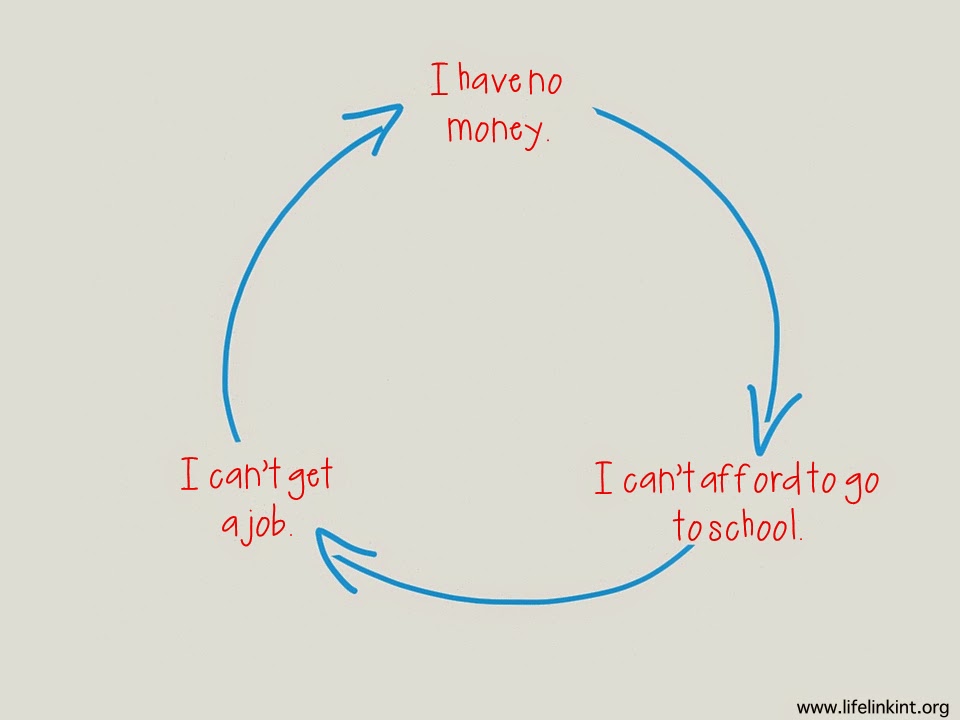How exactly does a free school affect the poverty of a local community? There are some practical ways a family that falls below the extreme poverty line benefits from a free educational system.
Kids cost money. That’s a fact every parent knows. Food, clothing, shelter, and all the other incidentals add up. When faced with extreme poverty, having a place that relieves the financial pressure for part of the day makes a big impact.
This kind of goes along with number one. Single parents that are staying at home have a hard time making an income. Providing a safe place for children to be a large part of the day frees up single parents to work during that time.
3. By breaking the circular logic of poverty.
Circular logic is when one part of the problem affects another part of the problem which affects the first part again. In our area in Sandino, Nicaragua lack of money leads to lack of education, which leads to lack of work, which leads to lack of money, and the cycle repeats itself. By providing a free education we can break the poverty cycle.
4. By reducing the amount of future poverty.
Children begging in the street or washing car windows is an everyday reality in Nicaragua. By providing a quality, free education we’re reducing the amount of impoverished people for generations to come.
There are countless other ways a free education breaks the cycle of poverty, but these are the big four. What are your thoughts? Have any other ideas of what education does to impact poverty? Leave it in the comments below so we can respond.


Comment(1)
Anonymous says
January 28, 2015 at 9:19 pmGreat article! Definitely points that I'd never considered regarding education and the impact that it has on the cycle of poverty. Thank you!